Abstract
The evolution of surgical dressings is traced from 1600 b.c. to a.d. 1944.
The availability of an increasing variety of man-made fibres and films from 1944 onwards has stimulated work on wound dressings, and some of the more important contributions, both clinical and experimental, are discussed. The functions of a wound dressing and the properties which the ideal wound dressing should possess are given. The necessity for both histological and clinical evaluation of wound dressings in animals and in man is stressed.
Wound dressings are the most commonly used therapeutic agents, but there is no means whereby their performance can be assessed. An attempt should be made either nationally or internationally to establish a standard method of assessing the performance of wound dressings. For this it is necessary to have an internationally agreed standard dressing which could be used as a reference or control dressing in all animal and human work. The only animal with skin morphologically similar to that of man is the domestic pig. Three types of wounds could be used: (1) partial-thickness wounds; (2) full-thickness excisions; and (3) third-degree burns.
The development of standard techniques for the assessment of the efficiency of wound dressings would be of considerable benefit to the research worker, the medical profession, the patient, and the surgical dressings industry.
Full text
PDF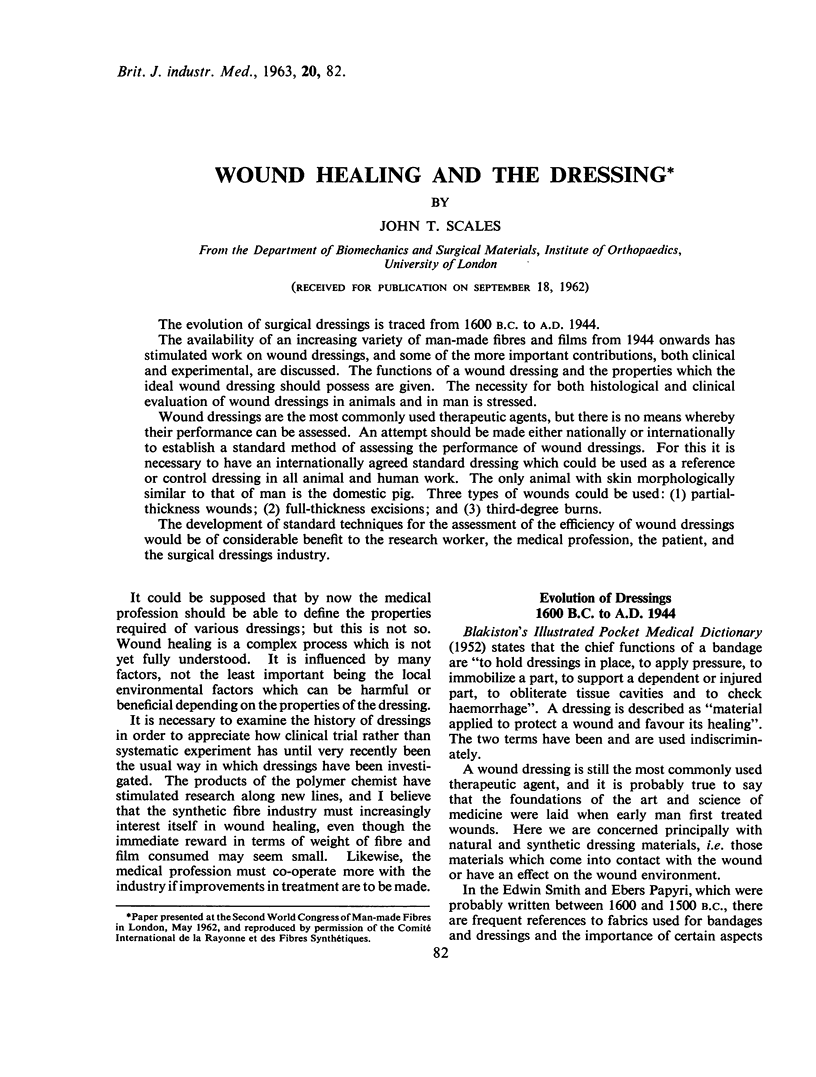
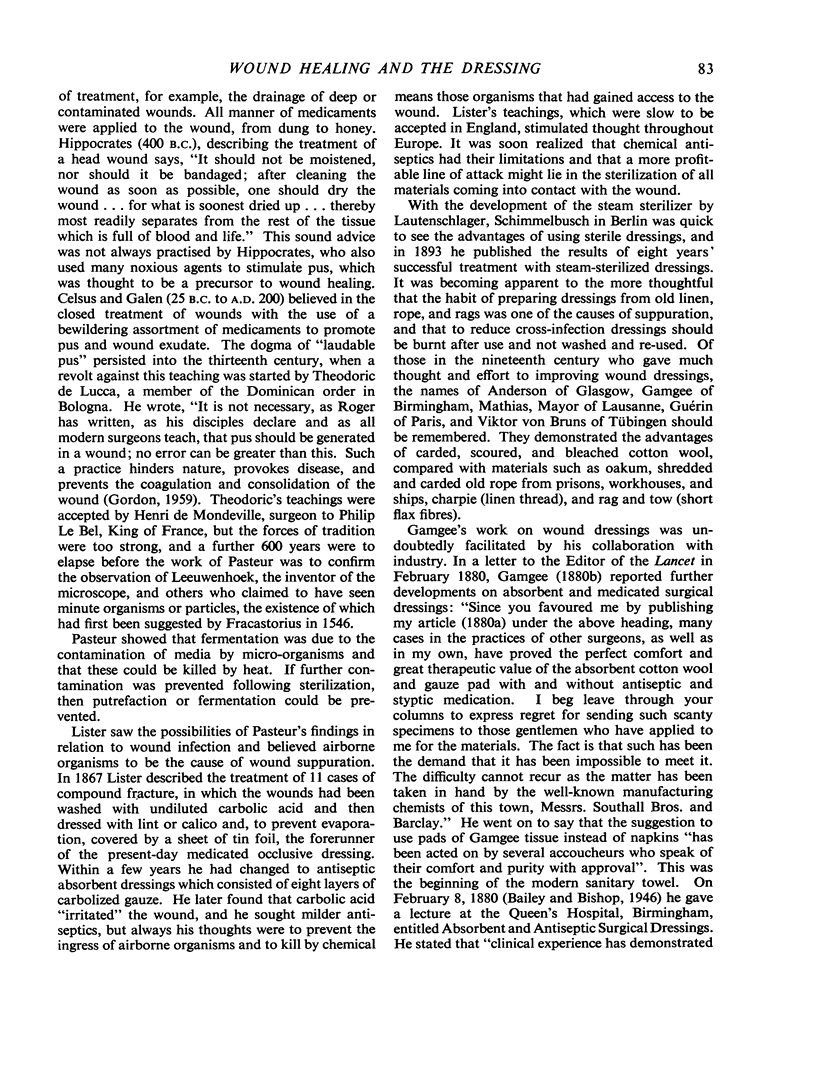
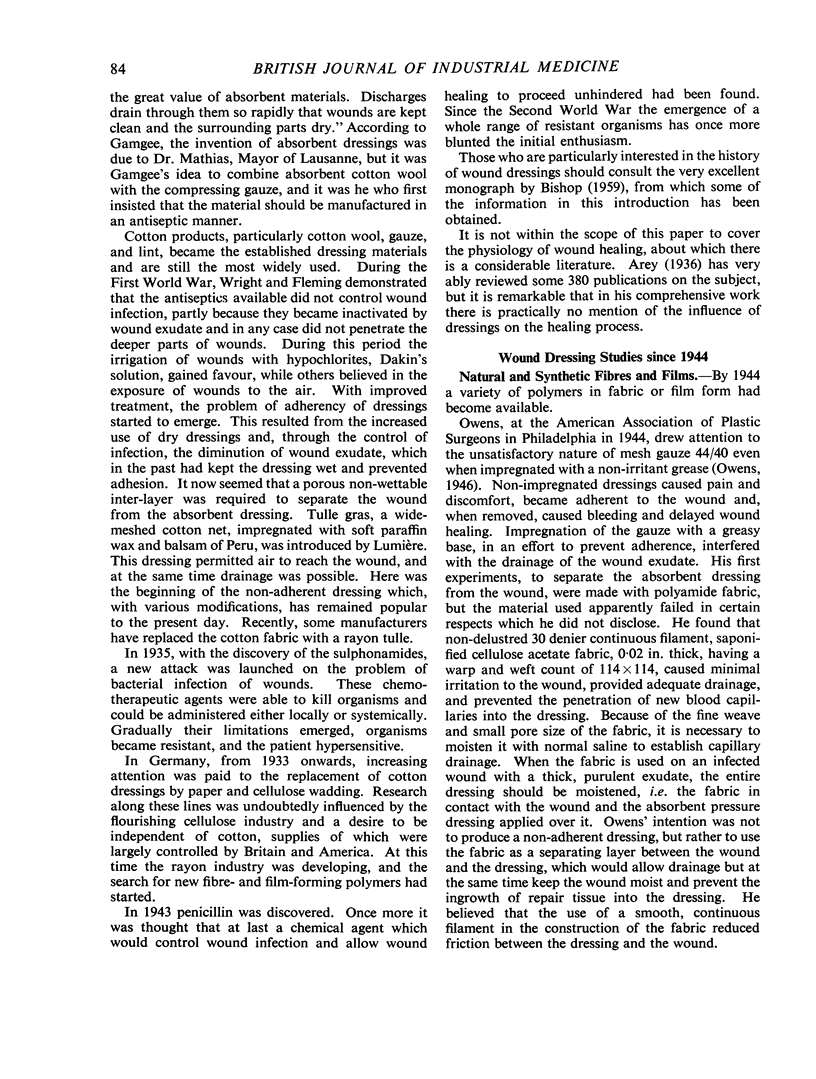
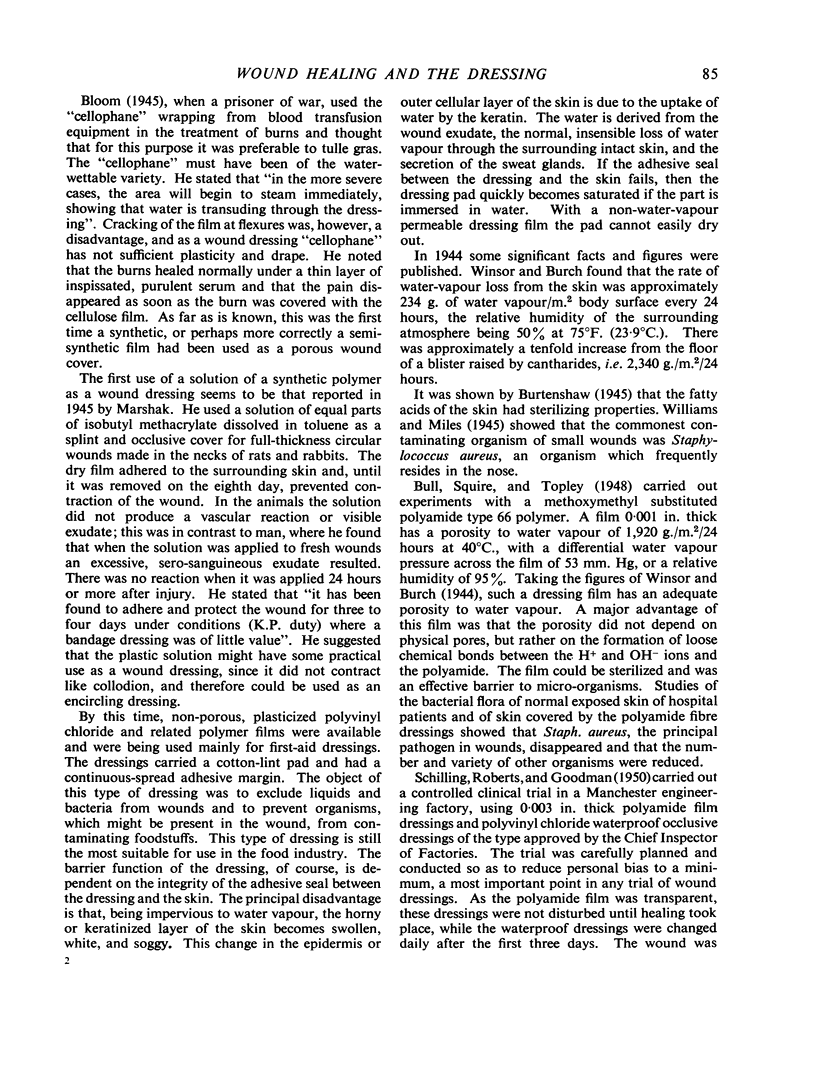
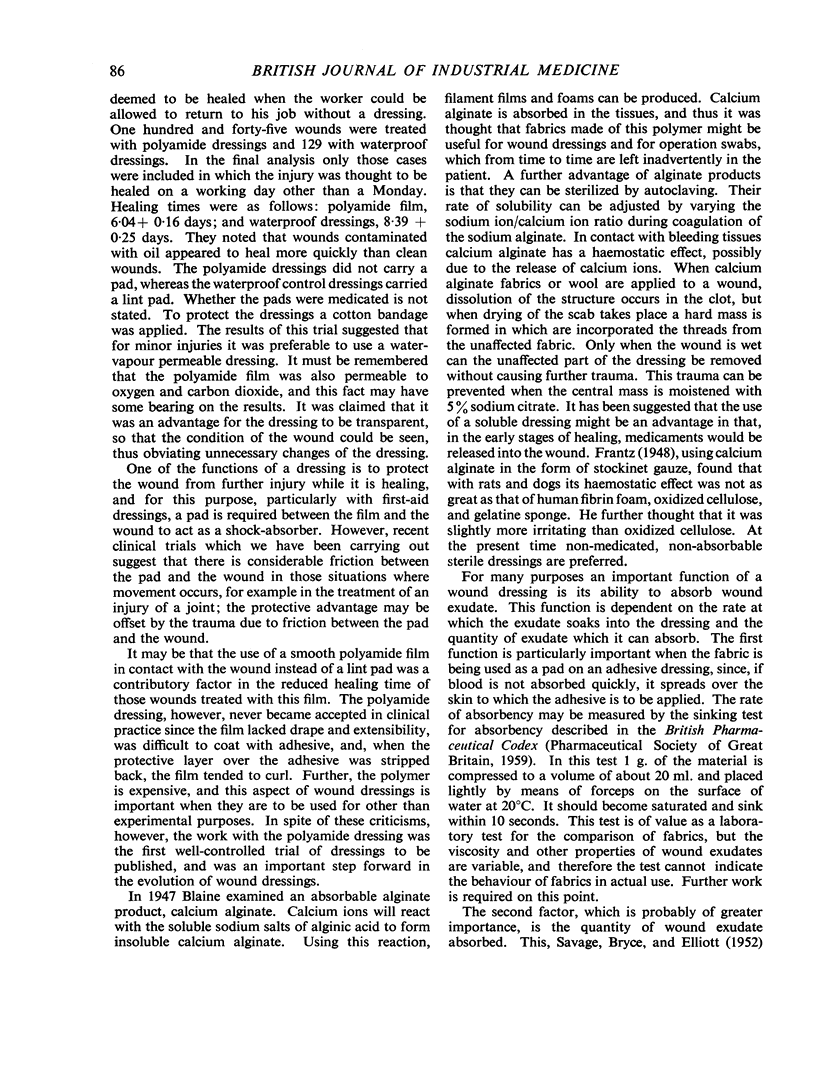
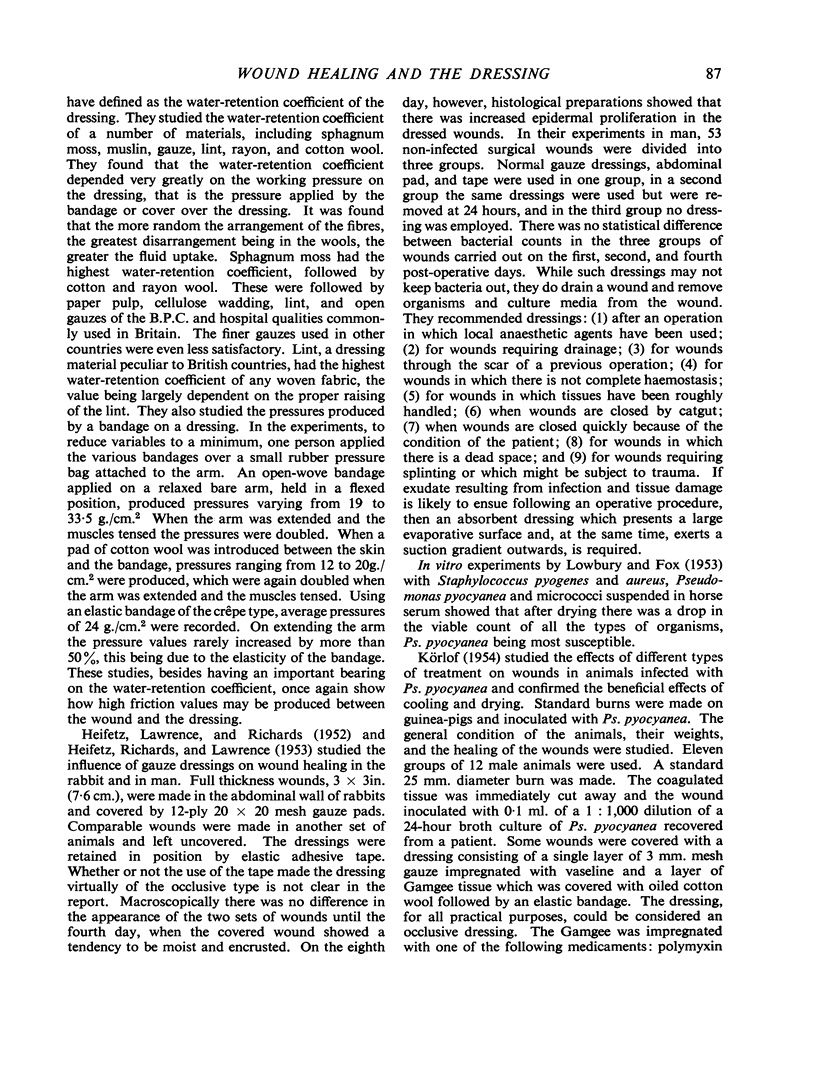
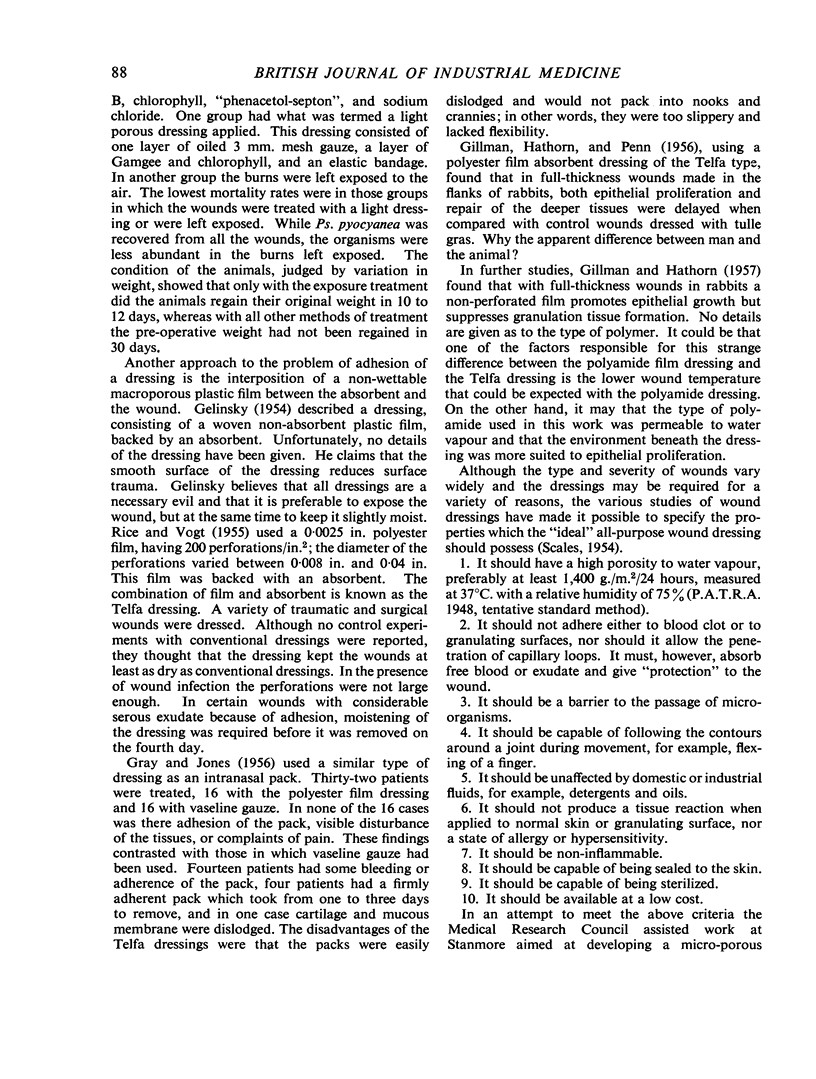
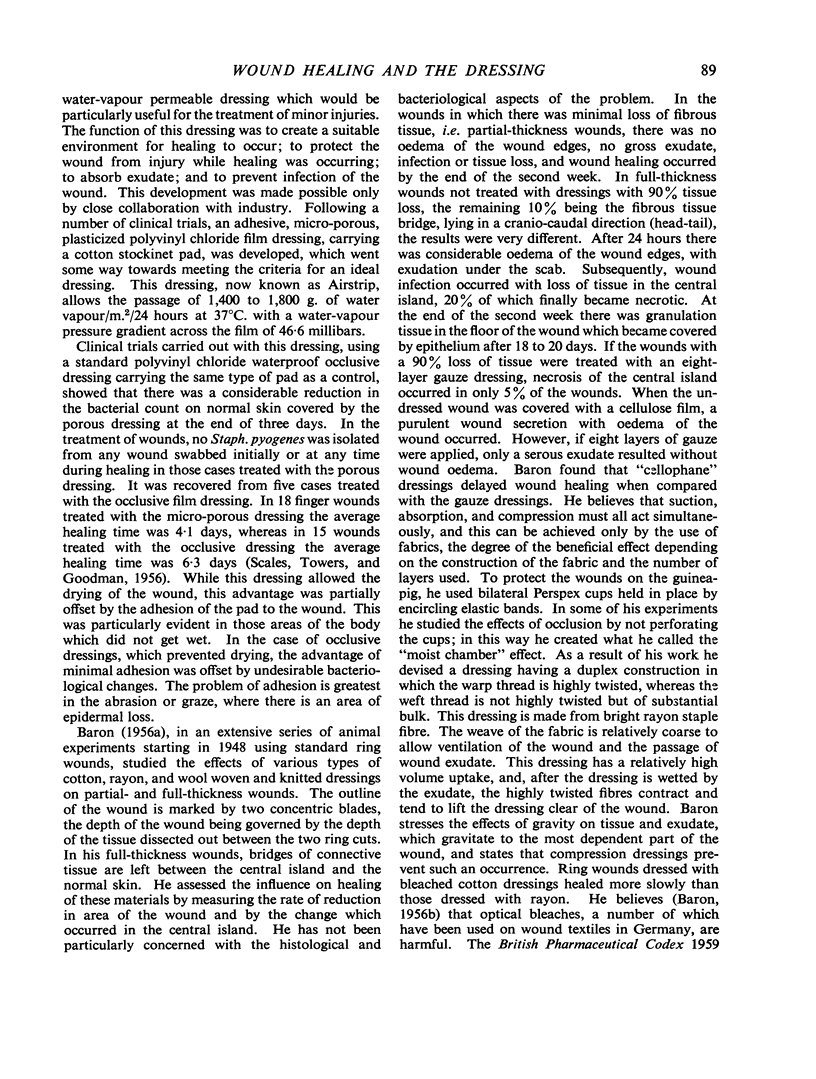
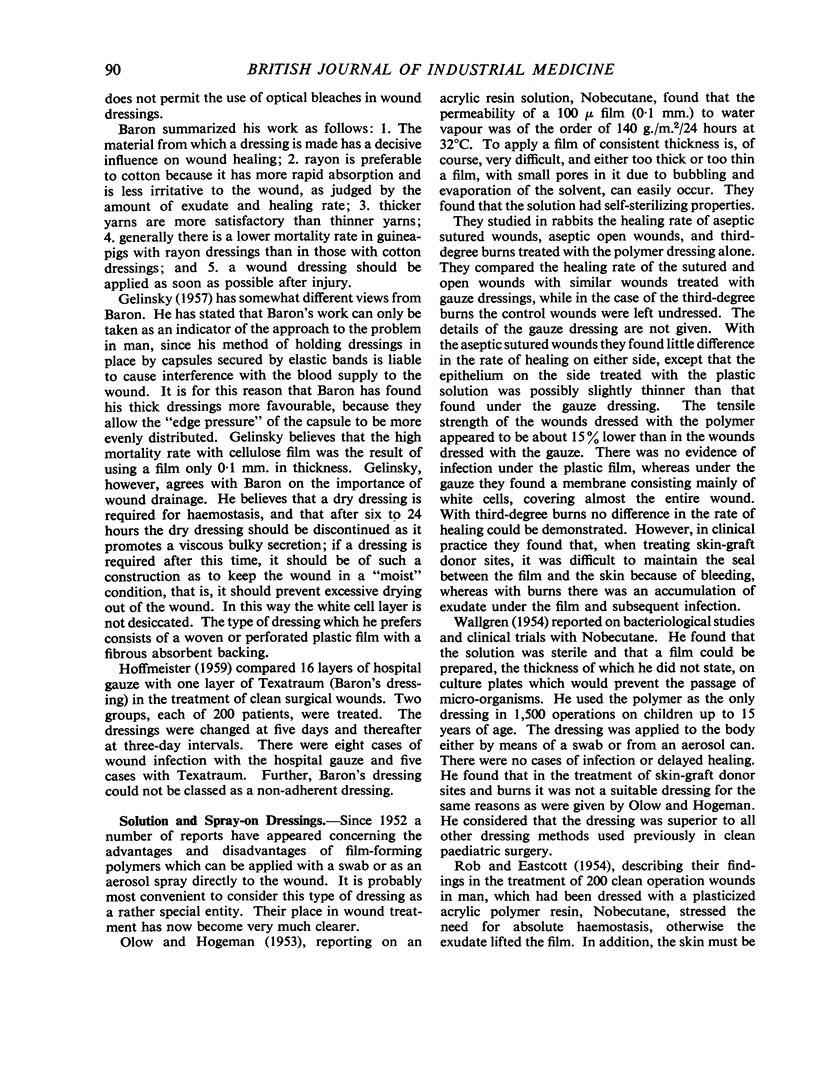
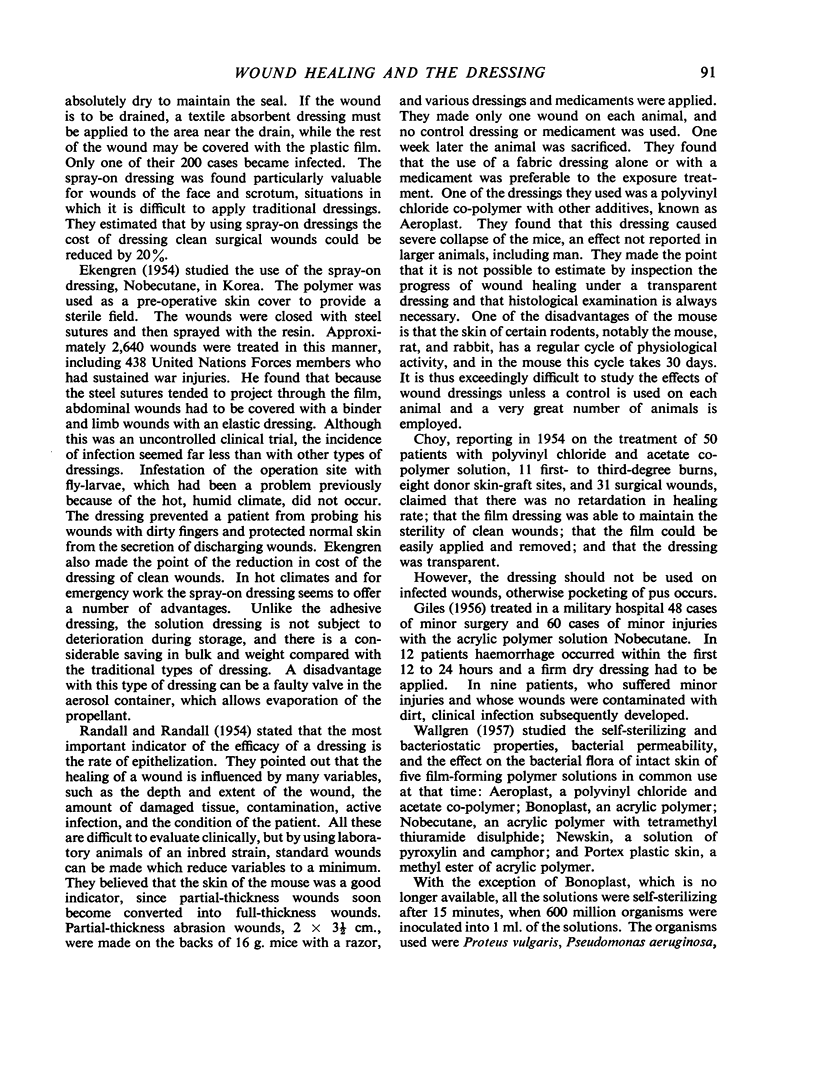
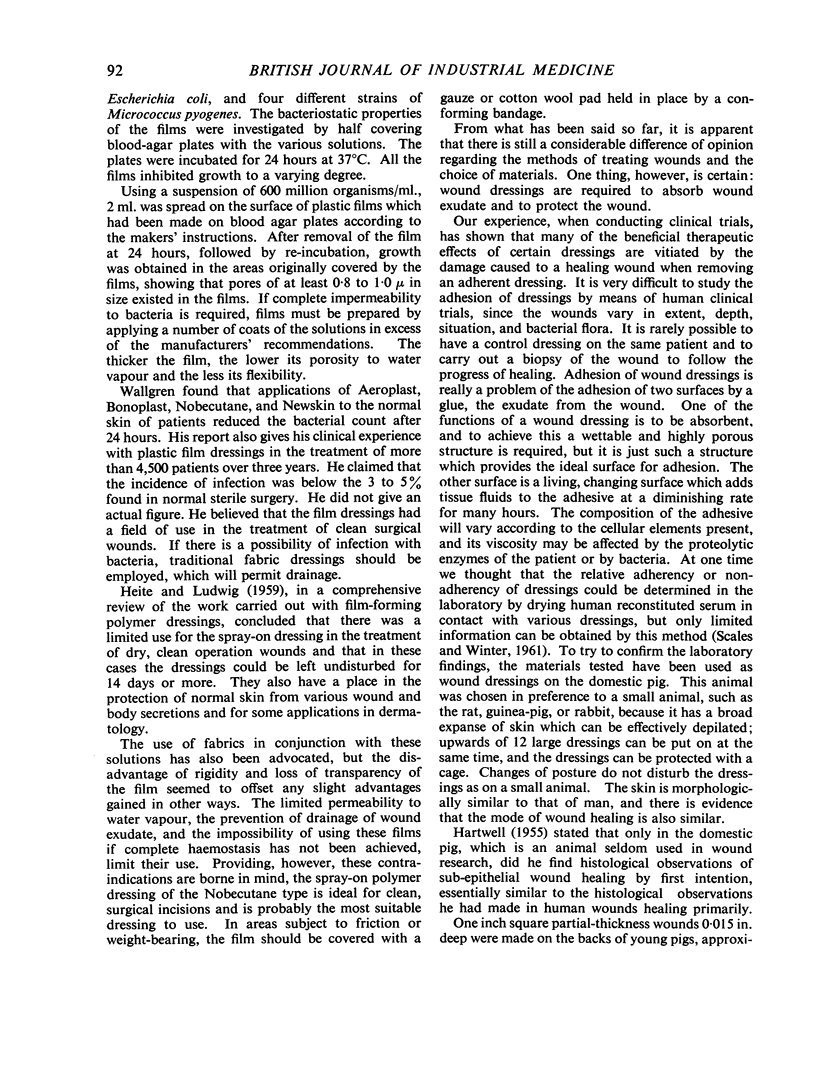
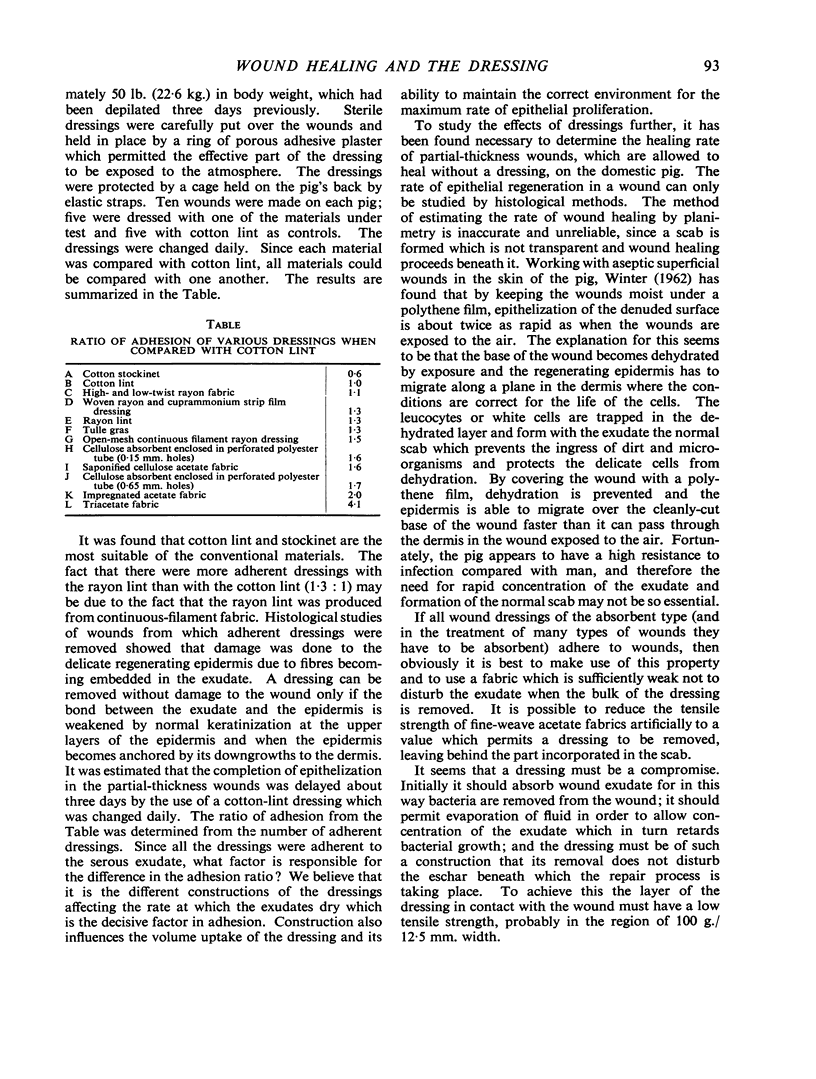
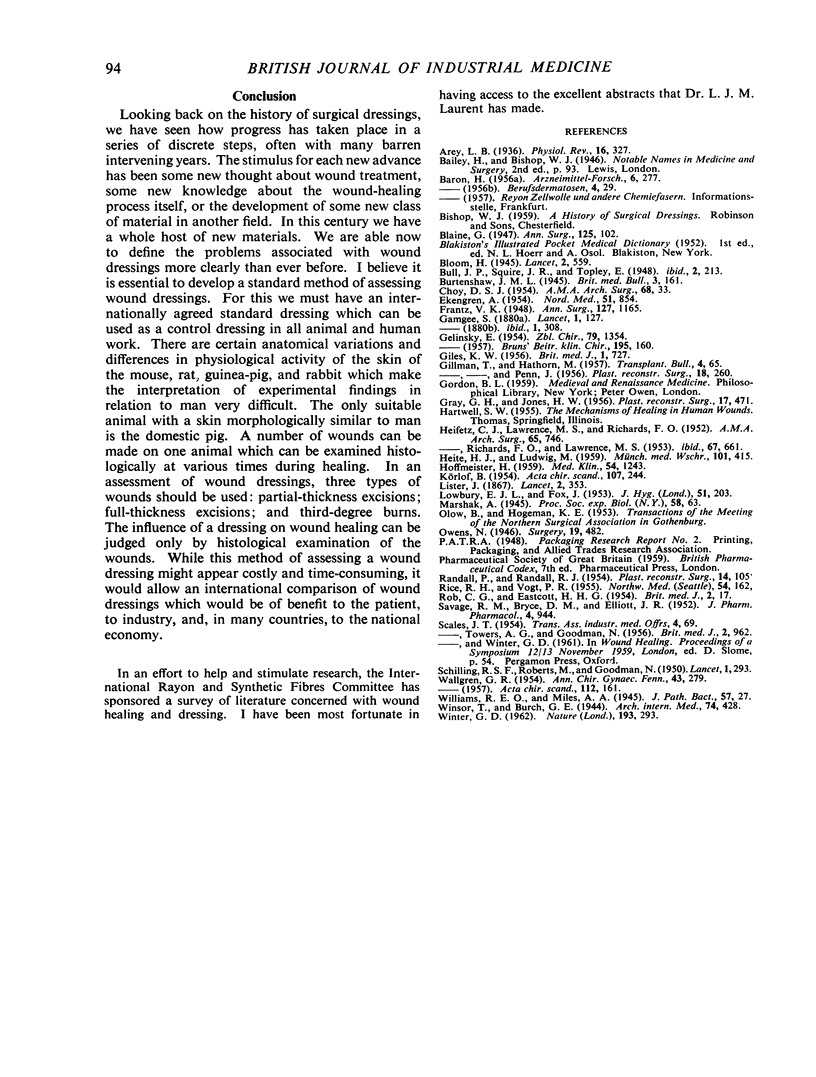
Selected References
These references are in PubMed. This may not be the complete list of references from this article.
- BARON H. Wesen und Wirkung eines atraumatischen Wundtextils. Arzneimittelforschung. 1956 May;6(5):277–282. [PubMed] [Google Scholar]
- Blaine G. Experimental Observations on Absorbable Alginate Products in Surgery : Gel, Film, Gauze and Foam. Ann Surg. 1947 Jan;125(1):102–114. doi: 10.1097/00000658-194701000-00011. [DOI] [PMC free article] [PubMed] [Google Scholar]
- CHOY D. S. Clinical trials of a new plastic dressing for burns and surgical wounds. AMA Arch Surg. 1954 Jan;68(1):33–43. doi: 10.1001/archsurg.1954.01260050035005. [DOI] [PubMed] [Google Scholar]
- EKENGREN A. Flytande plast vid kirurgiskt arbete i Korea. Nord Med. 1954 Jun 17;51(25):854–855. [PubMed] [Google Scholar]
- Frantz V. K. Experimental Studies of Alginates as Hemostatics. Ann Surg. 1948 Jun;127(6):1165–1172. doi: 10.1097/00000658-194806000-00005. [DOI] [PMC free article] [PubMed] [Google Scholar]
- GELINSKY E. Curotect, ein nichtwundhaftender Verbandstoff; sein Verwendungszweck und sein Verwendungsbereich. Zentralbl Chir. 1954;79(32):1354–1361. [PubMed] [Google Scholar]
- GILES K. W. Experience with nobecutane in minor surgery. Br Med J. 1956 Mar 31;1(4969):727–728. doi: 10.1136/bmj.1.4969.727. [DOI] [PMC free article] [PubMed] [Google Scholar]
- GILLMAN T., HATHORN M., PENN J. Is skin homografting necessary? A re-examination of the rationale for auto- or homo-grafting of cutaneous injuries and a preliminary report on the action of plastic dressings. Plast Reconstr Surg (1946) 1956 Oct;18(4):260–274. [PubMed] [Google Scholar]
- GOODMAN N., SCALES J. T., TOWERS A. G. Development and evaluation of a porous surgical dressing. Br Med J. 1956 Oct 27;2(4999):962–968. doi: 10.1136/bmj.2.4999.962. [DOI] [PMC free article] [PubMed] [Google Scholar]
- GRAY G. H., JONES H. W., Jr A satisfactory non-adherent intranasal pack. Plast Reconstr Surg (1946) 1956 Jun;17(6):471–472. doi: 10.1097/00006534-195606000-00007. [DOI] [PubMed] [Google Scholar]
- HEIFETZ C. J., LAWRENCE M. S., RICHARDS F. O. Comparison of wound healing with and without dressings; experimental study. AMA Arch Surg. 1952 Nov;65(5):746–751. doi: 10.1001/archsurg.1952.01260020738012. [DOI] [PubMed] [Google Scholar]
- HEIFETZ C. J., RICHARDS F. O., LAWRENCE M. S. Wound healing without dressings; clinical study. AMA Arch Surg. 1953 Nov;67(5):661–669. doi: 10.1001/archsurg.1953.01260040672004. [DOI] [PubMed] [Google Scholar]
- HEITE H. J., LUDWIG M. Moderne Plastikfilme und ihre Bedeutung für externe Therapie und Prophylaxe. Munch Med Wochenschr. 1959 Mar 6;101(10):415–420. [PubMed] [Google Scholar]
- HOFFMEISTER H. Wundheilung durch ein atraumatisches Wundtextil. Med Klin. 1959 Jul 3;54(27):1243–1245. [PubMed] [Google Scholar]
- KORLOF B. Investigations into different methods of treating pyocyaneus-infected burns. Acta Chir Scand. 1954 May 5;107(2-3):244–257. [PubMed] [Google Scholar]
- LOWBURY E. J., FOX J. The influence of atmospheric drying on the survival of wound flora. J Hyg (Lond) 1953 Jun;51(2):203–214. doi: 10.1017/s0022172400015631. [DOI] [PMC free article] [PubMed] [Google Scholar]
- RANDALL P., RANDALL R. J. The effects of various methods of treatment on wound healing: an experimental study. Plast Reconstr Surg (1946) 1954 Aug;14(2):105–117. doi: 10.1097/00006534-195408000-00002. [DOI] [PubMed] [Google Scholar]
- RICE R. H., VOGT P. R. New material for surgical dressings. Northwest Med. 1955 Feb;54(2):162–162. [PubMed] [Google Scholar]
- ROB C. G., EASTCOTT H. H. A plastic surgical dressing. Br Med J. 1954 Jul 3;2(4878):17–18. doi: 10.1136/bmj.2.4878.17. [DOI] [PMC free article] [PubMed] [Google Scholar]
- SAVAGE R. M., BRYCE D. M., ELLIOTT J. R. The water retention coefficient of surgical dressings. J Pharm Pharmacol. 1952 Nov;4(11):944–958. doi: 10.1111/j.2042-7158.1952.tb13228.x. [DOI] [PubMed] [Google Scholar]
- SCHILLING R. S. F., ROBERTS M., GOODMAN N. Clinical trial of occlusive plastic dressings. Lancet. 1950 Feb 18;1(6599):293–296. doi: 10.1016/s0140-6736(50)91999-4. [DOI] [PubMed] [Google Scholar]
- WINTER G. D. Formation of the scab and the rate of epithelization of superficial wounds in the skin of the young domestic pig. Nature. 1962 Jan 20;193:293–294. doi: 10.1038/193293a0. [DOI] [PubMed] [Google Scholar]


